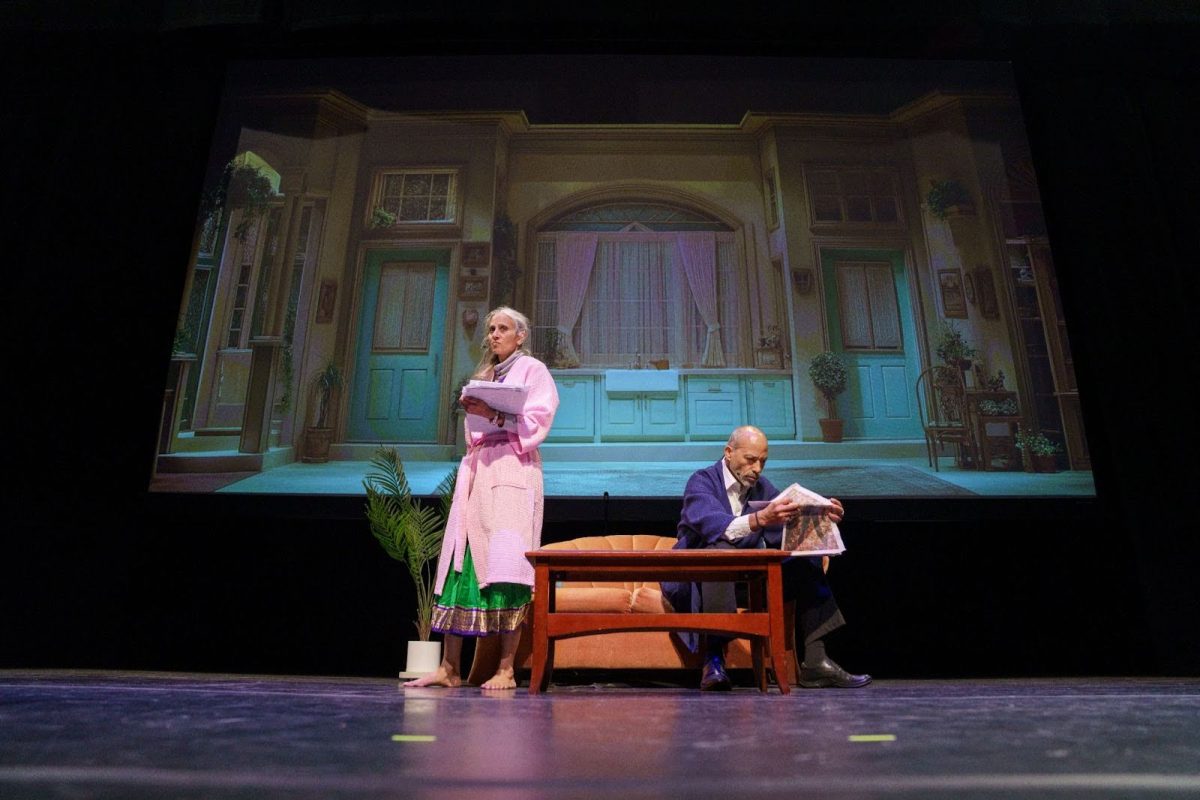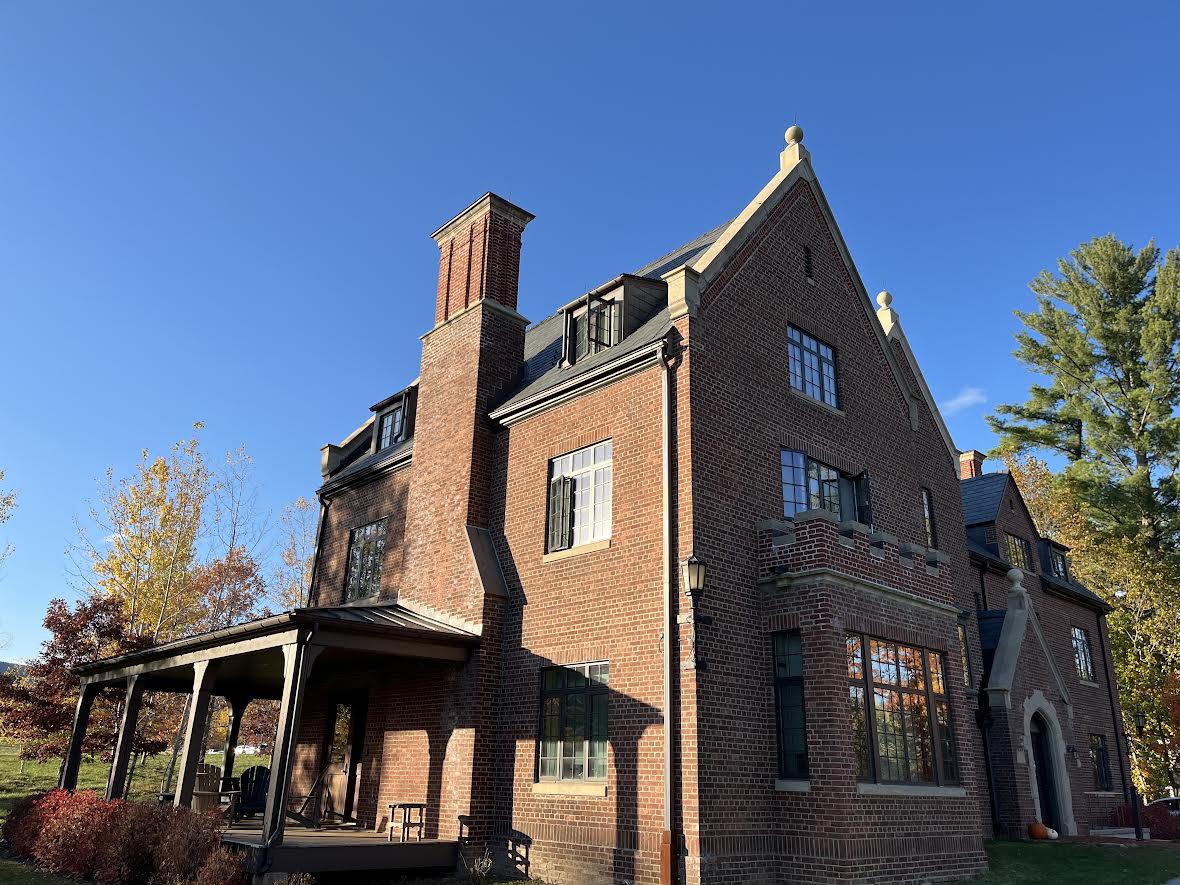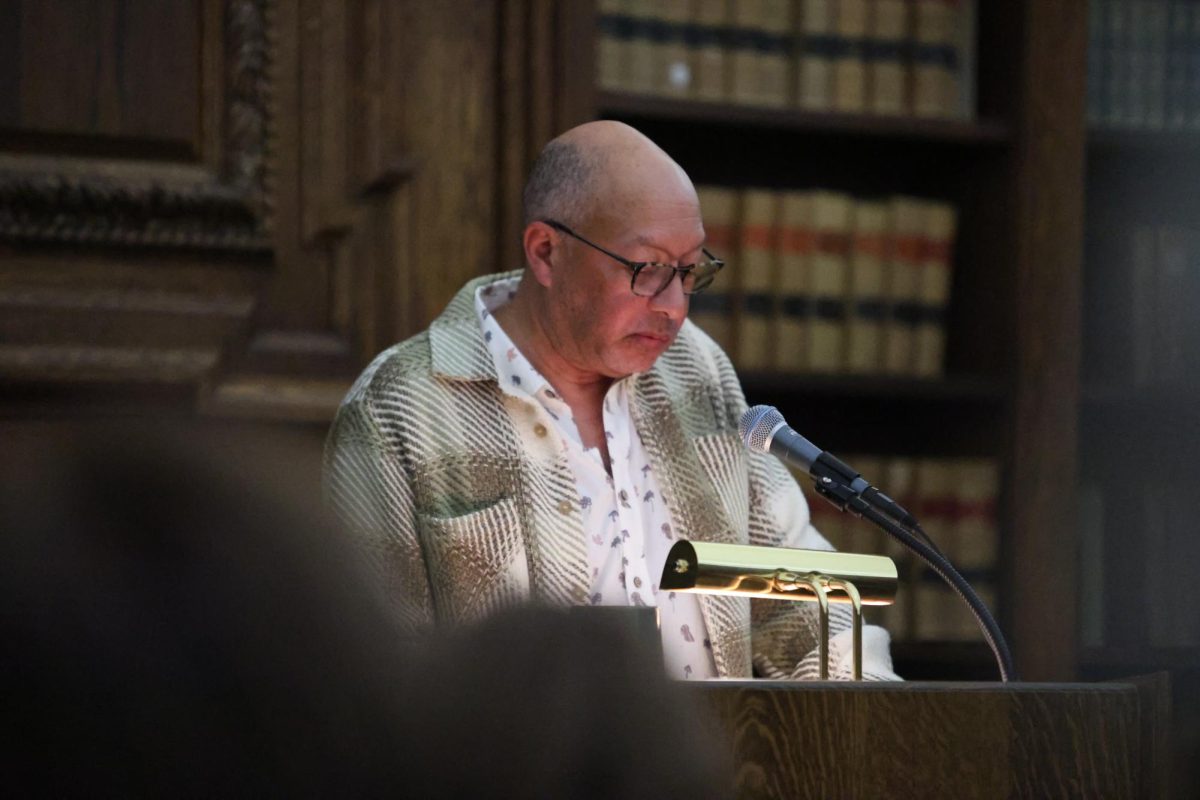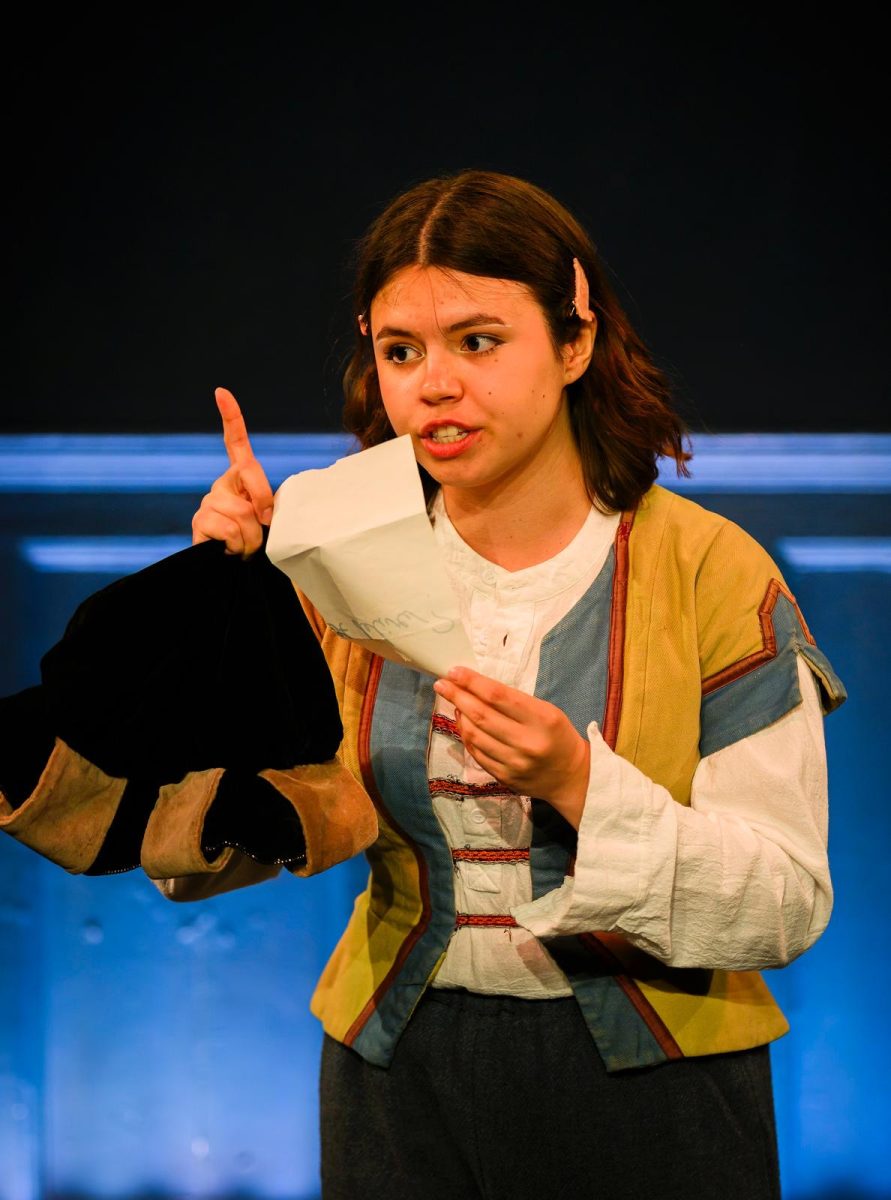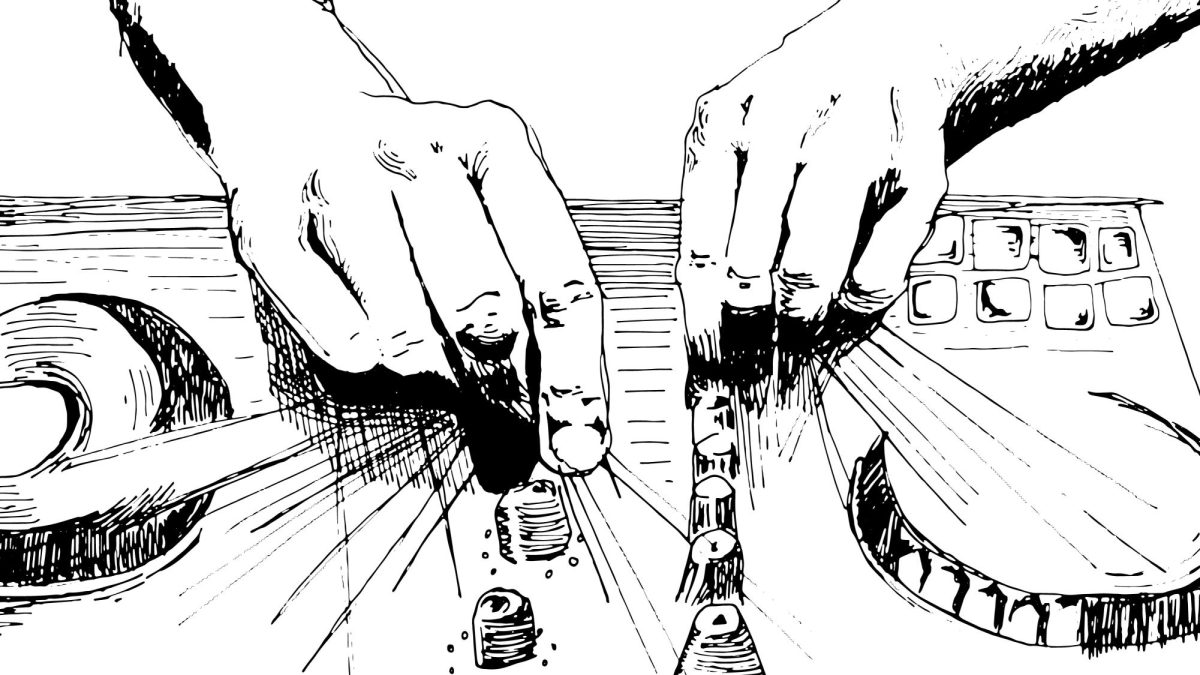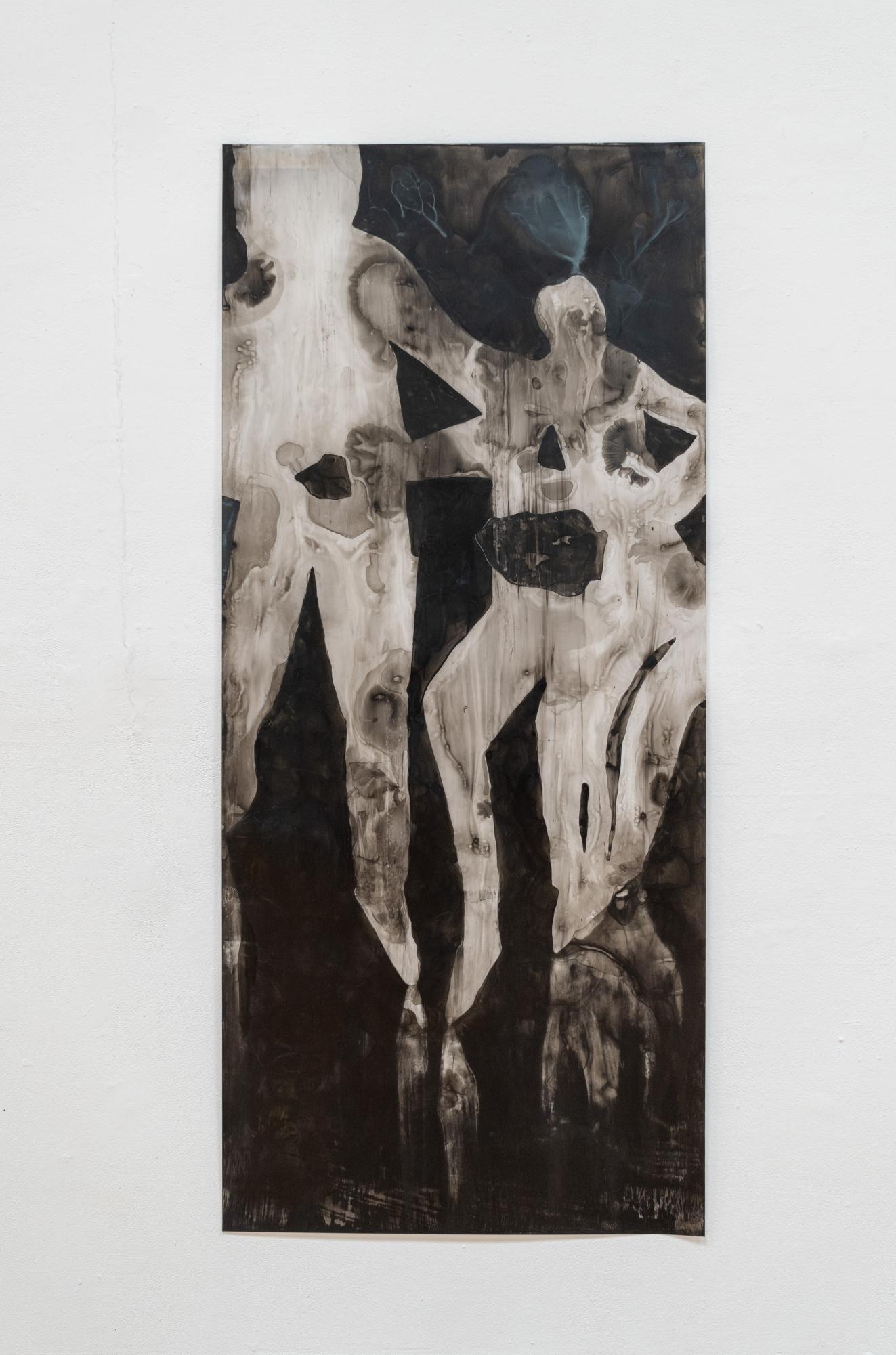
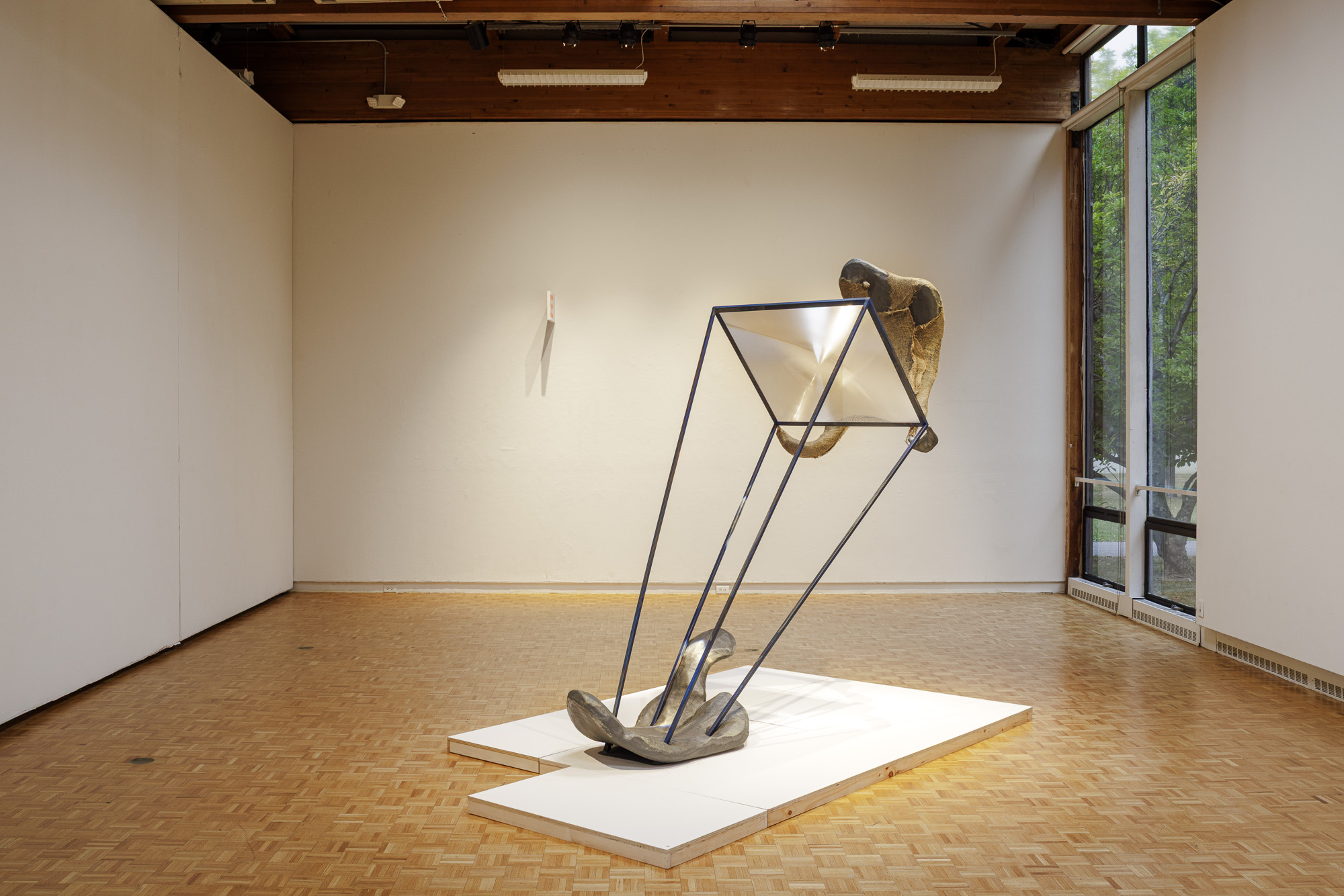
Associate Professor of Art Rit Premnath, the chair of studio art and art department co-chair, uses the term “overbody” to allegorize the political and social forces of bodily subjugation — and as the title of his latest exhibition, Overbody: New Works by Sreshta Rit Premnath. Curated by Anne Thompson, the director and curator of Usdan Gallery, the exhibition opened on Sept. 16 and will remain open until December at the Usdan Gallery in Bennington, Vt.
Upon entering the gallery, viewers encounter a multimedia splay of Premnath’s work — sculptures and ink paintings strike dissonant chords to produce a sinister cacophony. The sculptures, which Premnath calls “slumps,” show the dynamism of resistance and suppression. “That aspect of falling [is] another relation to the world, a kind of movement from vertical to horizontal as being contrary,” Premnath said. “Resisting implies a lot of agency on the part of the body … not being able to conform and therefore producing a kind of motion or movement or form that is imbalanced, imperfect, ugly.”
Each slump is shaped by metal and foam armatures that are then coated in a layer of plaster and Aqua-Resin. The pieces are finished with waxy paint and clad in fragments of burlap.
Premnath thinks of the “overbody” as an allegory of political and social subjugation. “I’m thinking about these social and political forces and how they both support and form us as people, but also in some ways coerce and confine us,” he said in an interview with the Record.
One of the most dynamic sculptures, titled “Vanishing Point,” depicts a figure subjected to the piercing gaze of another figure — perhaps exemplary of the overbody — through a large lens. If the light from an adjacent window is just right, a focused beam of scorching heat shines through the sculpture’s lens onto the other, heightening the sense of pressure that is constant throughout the exhibition.
Many of the slumps seem to resist the overbody, struggling upwards with fearful fervor. This movement mirrors his artistic procedure, Premnath explained. “I don’t have a clear plan in my mind,” he said. “And so it’s through this process of creating a form, and wrestling with it, and trying to find a posture that is both stable and tipping over that produces the final object.”
The roiling shapes of the slumps evoke an eerie sense that the viewer is not alone in the gallery, as if the slumps themselves are agents contorting in resistance. This movement inspired Bennington College faculty Mina Nishimura and Kota Yamazaki — artists specializing in “butoh,” a genre of contemporary Japanese dance characterized by slow, often unsightly, movement — to collaborate with Premnath. Nishimura and Yamazaki created “movement scores” for Overbody, which provide a framework for dance choreography to accompany Premnath’s sketches. Booklets containing the scores are available for free outside the gallery.
As one moves through the gallery, form as constriction emerges as a motif throughout Premnath’s work. In another set of sculptures, the viewer encounters a slump half-covered in burlap that completes one vertical loop and ends halfway through another loop. The burlap animates the slump into dynamism: While burlap does cover the first loop, giving the impression of stasis, the incomplete loop remains free of the constriction, reaching upward and outward in contortion.
“Passage,” a grid of twine undergirded by mulberry paper, provides us another schematic representation of form as constriction. Some stitches in the structure lack any mulberry paper, exposing gaps in the chain-link structure, while at other sections one finds large gaps without any twine link, exposing huge, body-like gaps in the structure’s attempt at totality.
After observing “Passage,” viewers wonder in what way the burlap also fails in its attempt at clothing the sculptures. However, Premnath does not give this connection explicitly. “One of the things that I want to do with my work is to sort of slow a viewer down so that they begin by approaching the work physically,” he said. In fact, Premnath believes the questions his work tries to provoke can come across to the viewer as they draw connections between his pieces. “As you walk around, the relations between things keep changing… But the hope is always that the questions unfold slowly, or that the material and conceptual connections kind of coalesce over time,” he said.
Though Premnath’s figures are largely abstract, the images are pulled from reality. Perhaps the most unsettling works in the exhibition are the vertical ink paintings lining the walls. A thick horizontal band of shiny black ink reaches across the line of paintings, bleeding into crowds of inverted human figures. One particular piece, titled “Suspend,” finds its basis in recent footage of human rights abuses by U.S. Immigration and Customs Enforcement, Premnath explained. Another, references immigrants in India struggling to return home by foot during the COVID-19 pandemic lockdown.
Despite the works’ abstract quality, the exhibition’s evocation is clear. “It’s not that abstraction is in contradiction to representation,” Premnath said. “But abstraction is a means of pulling something out from the world … in order to look at it in a particular way.”
By exploring things on the periphery of his understanding, Premnath highlights that there can be no interpretative closure of his exhibition. “It’s a generative space,” he said. Thus when one finds themself surrounded by a community of figures, they are asked to contemplate their own relationship to the overbody.
According to Premnath, his artwork is intended to ask questions — both to the viewer and himself. “I think often I am exploring something that is at the edge of my understanding that I don’t understand fully,” he said. “In fact, often I look at my sculptures and my paintings after I’ve made them, and think … this thing that I made, ‘Who made that? What is it?’”
Premnath will give an artist’s talk on Oct. 21 at 7 p.m. in the Tishman Auditorium at Bennington College.
Correction: A previous version of this article incorrectly stated that Premnath’s piece “Suspend” references immigrants in India struggling to return home by foot during the COVID-19 pandemic lockdown. The piece depicts recent footage of human rights abuses by U.S. Immigration and Customs Enforcement. This article was updated on Oct. 4, 2025 at 8:37 p.m. to reflect this change.



